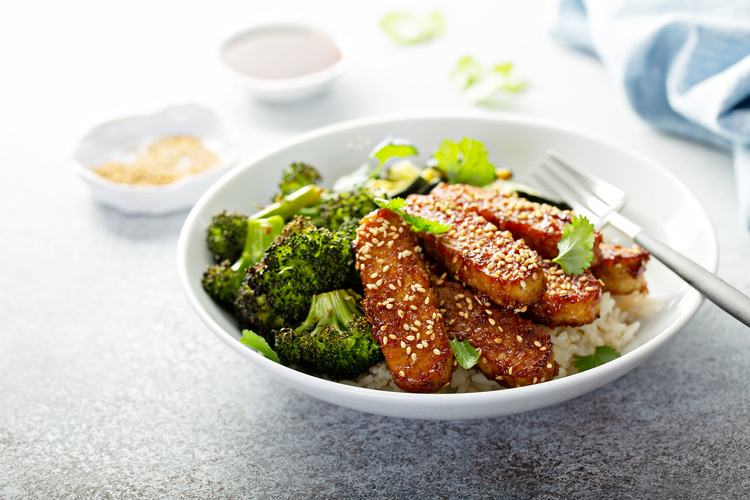The Easiest Ways to Add Plant-Based Protein to Your Salads
Eating a salad for lunch or dinner can surely pack in a nice dose of greens and other fruits and veggies, where you’re getting a rich supply of iron, fiber, antioxidants, as well as vitamins and minerals, like vitamin C and magnesium.
However, leafy greens and veggie-based toppings won’t do much when it comes to protein—that’s why people often throw canned or grilled salmon, diced grilled chicken, shrimp or steak strips on top in order to increase protein. And protein is needed for muscle recovery post-workout, cognitive health, and satiety, where that salad will fill you up for longer. It’s also one of the macronutrients to sustain human life, so it’s pretty important!
But for anyone averse to meat or dairy-based proteins, you can still add plant-based proteins for that needed macro boost! While animal protein is more readily absorbed and available for the body to use than plant protein is, you can combine different sources of plant-based protein to make for a high-protein salad that is totally meat-free.
Here are a couple of ways to boost protein content with plant-based ingredients, as well as enhance your salad’s flavor.

Tofu and Edamame
Made from soy, tofu and edamame are two high protein plant-based ingredients that are vegan and work nicely on a salad that’s sweet or savory. You can make a Thai-inspired salad with chopped peanuts, ginger or peanut sauce, edamame and tofu, for example. Or mix in edamame or tofu with blueberries and nuts for a fruitier salad while still getting a punch of protein.
Quinoa
Quinoa is a super high-protein grain that is also gluten-free, so it’s appropriate for those with an intolerance or allergy to gluten, too. Plus, it actually has a full amino acid profile, which is rare amongst plant proteins. This is important to ensure you’re getting all the necessary amino acids that stimulate muscle growth and development. As an added bonus, quinoa tastes great and gives salads a satisfying grainy, crunchy texture. Couple that with something like edamame, beans or legumes, chickpeas, black beans or lentils to create a protein power bowl.

Seitan and Tempeh
While similar to tofu, seitan and tempeh are not soy-based, but they are a great plant-based alternative to protein that has a “meaty” texture, so it’ll resemble diced chicken or turkey and make that salad feel heartier. Just make sure to read labels on products to find brands that have lower sodium options with wholesome ingredients.
Beans and Legumes
Black beans, navy beans, kidney beans, chickpeas, and lentils are all examples of beans and legumes that are high in fiber to boost digestion, gut health, and fullness, as well as protein to aid in muscle repair and additional satiety.
You can use a combination of them, like black beans with chickpeas, or you can pair one with a grain. You can also roast them with seasonings for a flavorful crunch—think of roasted chickpeas as if they were a crouton but healthier and protein packed — and, depending on who you ask, much tastier than dried bread!
Egg and Seafood Substitutes
There are more egg substitutes on the market, like Just Egg, which offers sous vide bites (you heat them up), or Just Folded, which is a ready made folded “egg” that can be used as a topper for salads or stuffed inside bread or a wrap for an easy breakfast sandwich on the go.
There are also more fish substitutes popping up too, like Good Catch’s fish-free tuna or banana blossoms, which you can buy and cook for that real fishy texture and taste.

Nuts and Seeds
While not super high in protein, combining nuts and seeds together can help you reach your needed protein count. You can pair hemp seeds with pistachios or almonds with pumpkin seeds, for example. You can also add nuts or seeds as an additional ingredient with one of the higher protein plant options listed above—it’ll give the salad that little extra protein boost!



